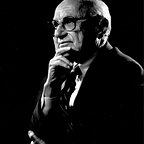How School Choice Can Improve Education and Society
Allowing competition makes schools better…
Concerns with the standard of K-12 education in America have been growing in recent years, and rightfully so. According to the World Population Review, America ranks 26th in overall test scores. In the past few decades, America has been falling behind in test scores in various subjects such as Math and Science, with countries such as Germany and France surpassing the United States. Lack of quality K-12 education can negatively impact one’s life later on.
The Federal, State, and Local governments in the United States have recognized this problem and have tried to solve it.
In 1980, Jimmy Carter signed the Department of Education Organization Act. This act established the US Department of Education and gave the federal government power to control the public education system. It was established to try to provide equal access to education and to improve it.
Since then, funding for K-12 education has dramatically increased countrywide:
Even though funding per pupil has been rising for decades, scores remain stagnant:
So where is the money going? The money goes to fund bloated bureaucracies and teacher unions:
As you can see, the money is going towards growing bloated bureaucracies instead of improving academic outcomes. Growth in administrative staff has been outpacing student enrollment and the teacher population.
Another problem in public education that does not get talked about is teacher unions.
In public schools across the country, teacher unions use their collective strength to fight off competition such as private schools and charter schools.
Teacher unions have lobbied state legislatures across the country to try to ban charter schools or restrict their creation. This reduces competition and instead funnels more money into large, bloated bureaucracies in government schools.
The solution to improving K-12 education and student achievement in America is to offer school choice through a national voucher program.
There has been a decades-long effort from teacher unions and progressives to discredit how school choice has improved the lives of students, families, and cities.
Teacher unions are interested in protecting the government monopoly of K-12 education to try and get increased funding for their salaries.
There is overwhelming evidence that school choice benefits enrollment and improves academic performance but is also an effective counter-measure to poverty.
For example, a study from the Quarterly Journal of Economics found that students who won lottery tickets to charter schools were 17% more likely to enroll in college right after High School. Lottery winners were also more likely to graduate college and enter the labor market.
The same study also came to other conclusions, such as how female winners were 10.1% less likely to become pregnant in their teens and how male winners were 100% less likely to be incarcerated than the control.
Another study from the University of Arkansas found drastically reduced crime rates in students who graduated using the Milwaukee school voucher program.
“Specifically, exposure to the MPCP is associated with a reduction of around 0.06 drug-related offenses, 0.01 property damage offenses, and 0.04 paternity suits. These estimates are equivalent to a 53 percent reduction in drug convictions, an 86 percent reduction in property damage convictions, and a 38 percent reduction in paternity suits”(Deangelis, Wolf 19).
School voucher programs have also been proven to raise test scores. A meta-analysis from the University of Arkansas using 19 studies on several school choice programs showed that reading and math improved in these voucher programs.
“For reading impacts, overall, we find positive effects of about 0.17 standard deviations. . . Overall, vouchers have a positive effect on math of 0.11 standard deviations, 0.07 standard deviations in the US and 0.15 standard deviations outside of the US”(Anderson, Shakeel, Wolf 39).
Another positive impact of school choice is its effect on reducing poverty. A study conducted by Northwestern University shows that school choice improves salaries, graduation rates, and the health of the individuals who entered the program.
There have been efforts in recent weeks by mayors, governors, and the president to expand school choice and programs due to the pandemic closing schools down all over the country. Some of these plans would be to give a tax rebate directly to families if their local public school doesn’t open up safely for the 2020–2021 school year.
These plans would be especially beneficial to low-income families. The extra money would allow such families the choice of sending their kids to private schools, charter schools, or homeschool their children. All of those methods have been proven to be a much safer and better way of educating children in the midst of a pandemic.
Thank You For Reading
